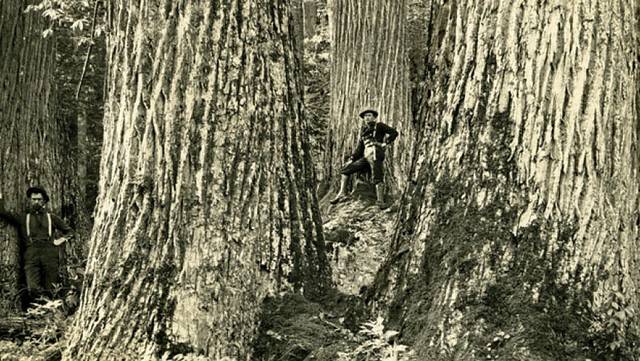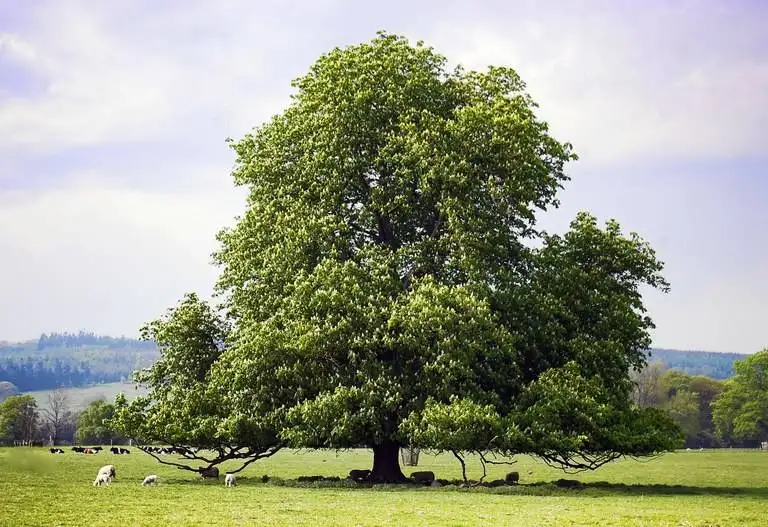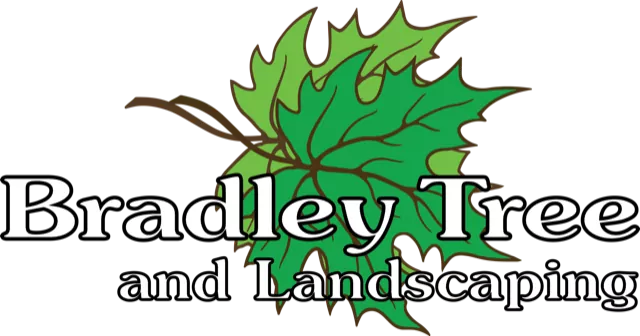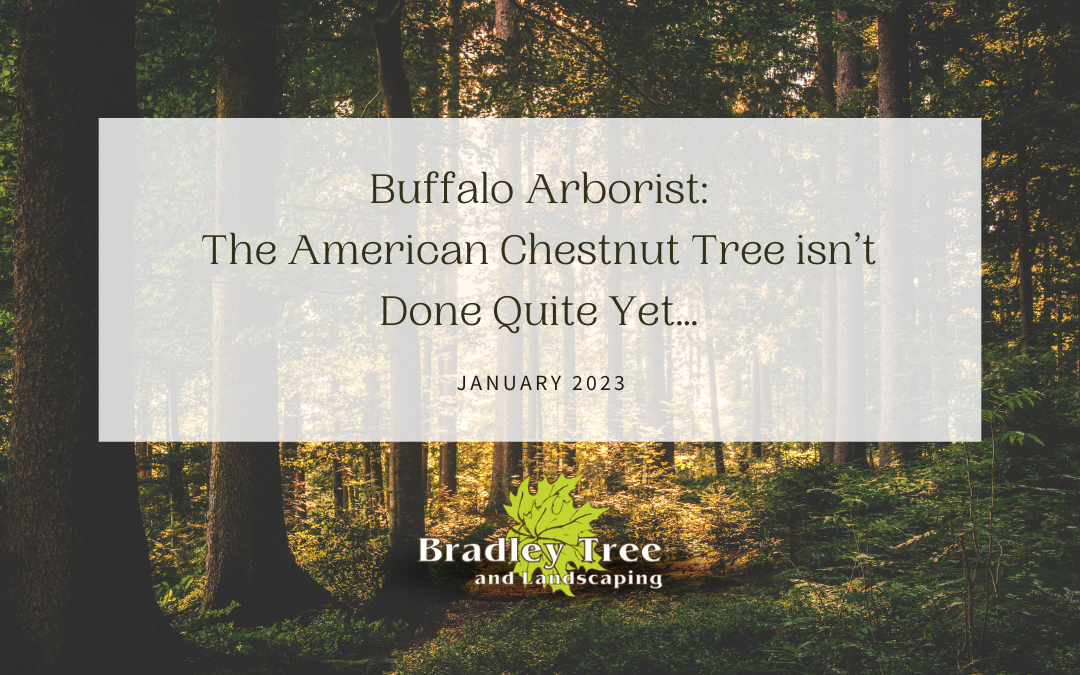Hello and welcome back to the Bradley Trees blog! We’ve talked briefly before about how blight and disease functionally killed off the American Chestnut tree decades ago in our blog about identifying damage from emerald ash borer beetles. Now it’s time to focus on the American Chestnut Tree specifically.
There are two major camps in the Chestnut tree revival discourse: people who selectively breed blight-tolerant trees and people who want to use genetic engineering to achieve the same goal. The looming decision the government has to make – whether to release the genetically-engineered trees that are resistant to blight, has erupted into a heated debate.
American Chestnut Tree Information
The former glory of the American Chestnut is best captured in a picture. This majestic giant of a tree could soar up to 100ft tall, and dominated forests east of the Mississippi. The rot-resistant wood of the tree had wide uses in fences, coffins, telephone and telegraph poles, railroad ties, and musical instruments, among others.

People in previous centuries in a time of those bountiful forests would even use the chestnuts the tree produced to pay for goods and to barter for services. However, it was functionally eradicated in the early 20th century due to a combination of deforestation, a disease to cause root rot, and the killing blow was the introduction of invasive Japanese Chestnut trees and a blight they brought with them. It’s estimated that the blight killed off somewhere between 3 and 5 billion chestnut trees.
The genetically engineered tree is currently only able to be grown in a handful of areas under close USDA supervision currently. The U.S Agriculture Department, the Food and Drug Administration, and the Environmental Protection Agency are assessing the risks that could arise from introducing the tree to the wild. A little while ago, the Agriculture Department posted two analyses that found that the genetically modified chestnut tree would have little environmental and forest ecosystem risk, but that there’s still some uncertainty surrounding its impact.
You Said There Are Two Major Camps For Bringing the American Chestnut Tree Back, What’s The Other?
The other major camp, selective breeding, with the goal of bringing the American Chestnut back is itself split into two groups. One of those groups is focused less on selective breeding with other chestnut species, and would instead prefer to propagate the wild survivors of the original blight. The base reasoning is that they’re the truest to the original American chestnut, being that same tree, and they hope it’s become resistant to the blight that killed its predecessors.
The other group is seeking to cross-breed American Chestnuts with Japanese and Chinese variants, which are naturally more tolerant to the blight but don’t grow quite as tall. A large issue this group faces is the lower amount of growth could make it less viable in forests that already have tall trees. Their hope is that through trial and error, they can produce a hybrid American chestnut tree that can be blight-resistant and grow tall enough, rapidly enough, to be viable in forests.
How Do The Geneticically-Modified American Chestnut Trees Work?

Researchers added an enzyme from wheat that can break down the toxin the blight produces, to create a blight-tolerant tree. The co-director of SUNY’s chestnut project had to say, “The resistance of Darling 58 (the name given to this modified tree) is superior to anything we’ve been able to do through traditional breeding”
If the government green-lights the engineered tree, people are ready to breed it with American chestnut trees to help it thrive in climates and soil types across its original spread.
The USDA and the American Chestnut Foundation have partnered to bring the chestnut back to its native ranges, by working with managers at Allegheny National Forest to have numerous chestnut farms across the forest to reach their goal of restoration.
To quote the USDA’s post on this topic in 2019, “Allegheny National Forest managers and Northern Research Station scientists are collaborating in four new studies on the forest and surrounding forestlands to evaluate first the importance of site quality to chestnut competitive ability and blight resistance; second the impact of deer browsing on chestnut survival and growth; third the planted chestnut response to prescribed fire; and fourth the application of the three-stage shelterwood system for chestnut establishment.”
Contact us!
Bradley Tree and Landscaping are full of professional, ISA-Certified arborists that are always eager to help and educate. As our CEO Jared Webber says,
“An educated customer is our best customer.”
Bradley Tree and Landscaping have been in business for 40 years! We’ve been proudly serving the Buffalo area with expert tree care services. These include wider plant health care, tree planting and tree removal, tree pruning and trimming, seasonal plant care and landscaping, emerald ash borer treatment, and more! Our exemplary work has earned us the honor of working on Olmstead Park’s oldest oak tree with pruning, restoration, and maintenance.
Make sure to check out our blog for more coverage from your favorite Buffalo Arborists! You can also find us on Facebook and YouTube. If you’ve had us by for some work before, make sure to leave us a review on Google, and if you’re unsure, check out those reviews!
If you’re ready to reach out, please give us a call at 716-916-2193 or fill out our convenient online contact form.

